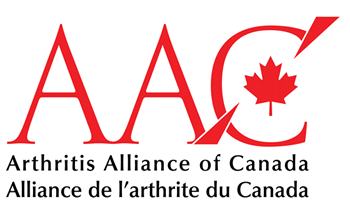Spring 2016 (Volume 26, Number 1)
Towards a Performance Measurement Framework for Inflammatory Arthritis Care in Canada
By Claire Barber, MD, FRCPC, PhD;
Diane Lacaille, MD, FRCPC, MHSc;
Dianne Mosher, MD, FRCPC; and
Deborah Marshall, PhD
Download PDF

Autoimmune inflammatory arthritis (IA), including rheumatoid arthritis (RA), spondyloarthritis (SpA), and juvenile idiopathic arthritis (JIA), is estimated to affect over one million Canadians; in many regions there is a shortage of arthritis healthcare providers. In response to these pressures and in an effort to optimize care delivery, the Arthritis Alliance of Canada (AAC) launched the Pan-Canadian Approach to Inflammatory Arthritis Models of Care in 2014. The model describes an approach to care delivery that may be applied in whole or in part in different healthcare settings depending on the context. A toolkit for implementation accompanies the model.
There exists across Canada a variety of innovative
models of care. For example, to ensure early access for patients with IA a number of centres have implemented central intake and triage systems. Other centres have increased clinic capacity through the use of nurse-led clinics or primary-care-provider-led clinics. In rural and remote settings, telehealth and outreach clinics have
likewise improved access to care.
However, how do we know if implementing a new model of care has improved the quality of clinical care? How do we evaluate our current care delivery to ensure our patients are getting the highest level of care and achieving the best outcomes? Such questions are important to answer not only when evaluating potential gaps in care, but also when advocating for healthcare resources.
Healthcare quality refers to the degree to which clinical and healthcare services are aligned with best practices; quality is assessed on six principle domains that reflect the provision of safe, effective, patient-centered, timely, efficient, and equitable care. A performance measure is a metric to evaluate
care delivery along these domains of quality. The AAC and its stakeholders have begun work on the development of performance
measures for an evaluation framework for IA.
For Phase I, in collaboration with IA stakeholders from across Canada, a set of six system-level performance measures were developed based on guidelines and harmonized, where appropriate, with existing measures from other countries. The measures capture access to care and treatment for patients with IA at the health-system level (e.g., clinic, region, or provincial level). Our findings
will be published in the March 2016 issue of the Journal of Rheumatology (JRheum).
The measures are currently being tested in five Canadian provinces, in 10 arthritis-care settings. The present measures, however, do not address best practices at the patient-provider level or patient outcomes. Phase II of the development of the AAC Evaluation Framework is to develop and test measures that will cross the care continuum for patients with IA. The framework will be a key tool for centres and practitioners wishing to evaluate the care they currently provide, and also for the evaluation of new models-of-care.
Claire Barber, MD, FRCPC, PhD
Assistant Professor,
Division of Rheumatology,
Department of Medicine,
University of Calgary
Calgary, Alberta
Diane Lacaille, MD, FRCPC, MHSc
Professor,
Division of Rheumatology,
Department of Medicine,
University of British Columbia
Senior Research Scientist,
Rheumatology
Mary Pack Chair in Rheumatology Research
Arthritis Research Canada
Richmond, British Columbia
Dianne Mosher, MD, FRCPC
Professor of Medicine,
Chief,
Division of Rheumatology,
University of Calgary
Calgary, Alberta
Deborah Marshall, PhD
Arthur J.E. Child Chair,
Rheumatology Outcomes Research
Professor,
Department of Community Health Sciences,
University of Calgary
Director,
Health Technology Assessment,
Alberta Bone & Joint Health Institute
Calgary, Alberta |